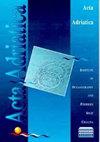软体动物的定居模式,特别是大地中海扇贝(Pecten jacobaeus,Linnaeus)和生物淤积生物在博卡-科托尔斯卡湾不同类型的收集器和地点的定居模式
IF 0.6
4区 生物学
Q3 MARINE & FRESHWATER BIOLOGY
引用次数: 1
摘要
研究了软体动物幼虫和其他生物污垢生物在实验收集器上的沉降,特别是参考了大地中海扇贝Pecten jacobaeus。三种由蔬菜袋制成的实验收集器,以日本使用的收集器为模型,被放置在位于博卡科托尔斯卡湾的四个现有鱼类和贝类养殖场。实验收集器分别放置在2017年6月至10月和6月至12月以及2017年8月至2018年2月,并在浸泡4至6个月后进行监测。总共确定了18种软体动物和28种生物污损生物。在采集者身上发现的数量最多的是以下贝类物种(68%)Talohlamys multistata、Mytilus galloprovincialis、Modiolarica sp.、Anomia ephippium和Limaria hians。最丰富的生物污损生物群是甲壳类动物(18%),其中有瓷蟹、长角皮蟹,而被膜动物(5%),其中包括乳细胞和卵母螺。主要目标物种,大地中海扇贝,在II型采集者中数量最多,有28个个体。从收集贝类幼虫和生物污损物种过程中使用的三种类型的实验收集器来看,I型和II型收集器被证明是更适合接收贝类幼虫的基础,因为海水的流动不受阻碍,可以使其成功生长和发育。Talochlamys multi-stariata物种数量丰富,它可能是水产养殖生产多样化的好候选者,从而有可能为农民提供额外的收入来源。本文章由计算机程序翻译,如有差异,请以英文原文为准。
Settlement patterns of molluscs, with particular reference on Great Mediterranean scallop (Pecten jacobaeus, Linnaeus) and biofouling organisms on different type of collectors and locations in Boka Kotorska Bay
The settlement of molluscs’ larvae of and other biofouling organisms on experimental collectors was studied, with particular reference Great Mediterranean scallop, Pecten jacobaeus. Three types of experimental collector made from vegetable sacks, modelled based on the collectors used in Japan, were placed in four existing fish and shellfish farms located in the Boka Kotorska Bay. The experimental collectors were placed in the periods June–October and June–December 2017 and the period August 2017–February 2018 and monitored after immersion of four to six months, respectively. In total, 18 species of molluscs and also 28 species of biofouling organisms were determined. The most abundant ones found on the collectors were the following shellfish species (68 %) Talohlamys multistriata, Mytilus galloprovincialis, Modiolarca sp., Anomia ephippium and Limaria hians. The most abundant group of biofouling organisms were crustaceans (18 percent) with a species of porcelain crab, Pisidia longicornis, and tunicates (5 percent) with the species Phallusia mammillataand Ascidia mentula. The main target species, Great Mediterranean scallop, was most abundant on collector Type II,with 28 individuals. From three types of experimental collectors used in the process of collecting larvae of shellfish and biofouling species, collector type-I and type-II proved to be a more suitable basis for receiving larvae of shellfish due to the unimpeded flow of sea water that allows their successful growth and development. Species Talochlamys multistriata, were found in great abundance and it could be good candidate to diversify the aquaculture production, thus potentially offering farmers an additional source of income.
求助全文
通过发布文献求助,成功后即可免费获取论文全文。
去求助
来源期刊

Acta Adriatica
生物-海洋与淡水生物学
CiteScore
1.60
自引率
11.10%
发文量
13
审稿时长
>12 weeks
期刊介绍:
Journal "Acta Adriatica" is an Open Access journal. Users are allowed to read, download, copy, redistribute, print, search and link to material, and alter, transform, or build upon the material, or use them for any other lawful purpose as long as they attribute the source in an appropriate manner according to the CC BY licence.
 求助内容:
求助内容: 应助结果提醒方式:
应助结果提醒方式:


